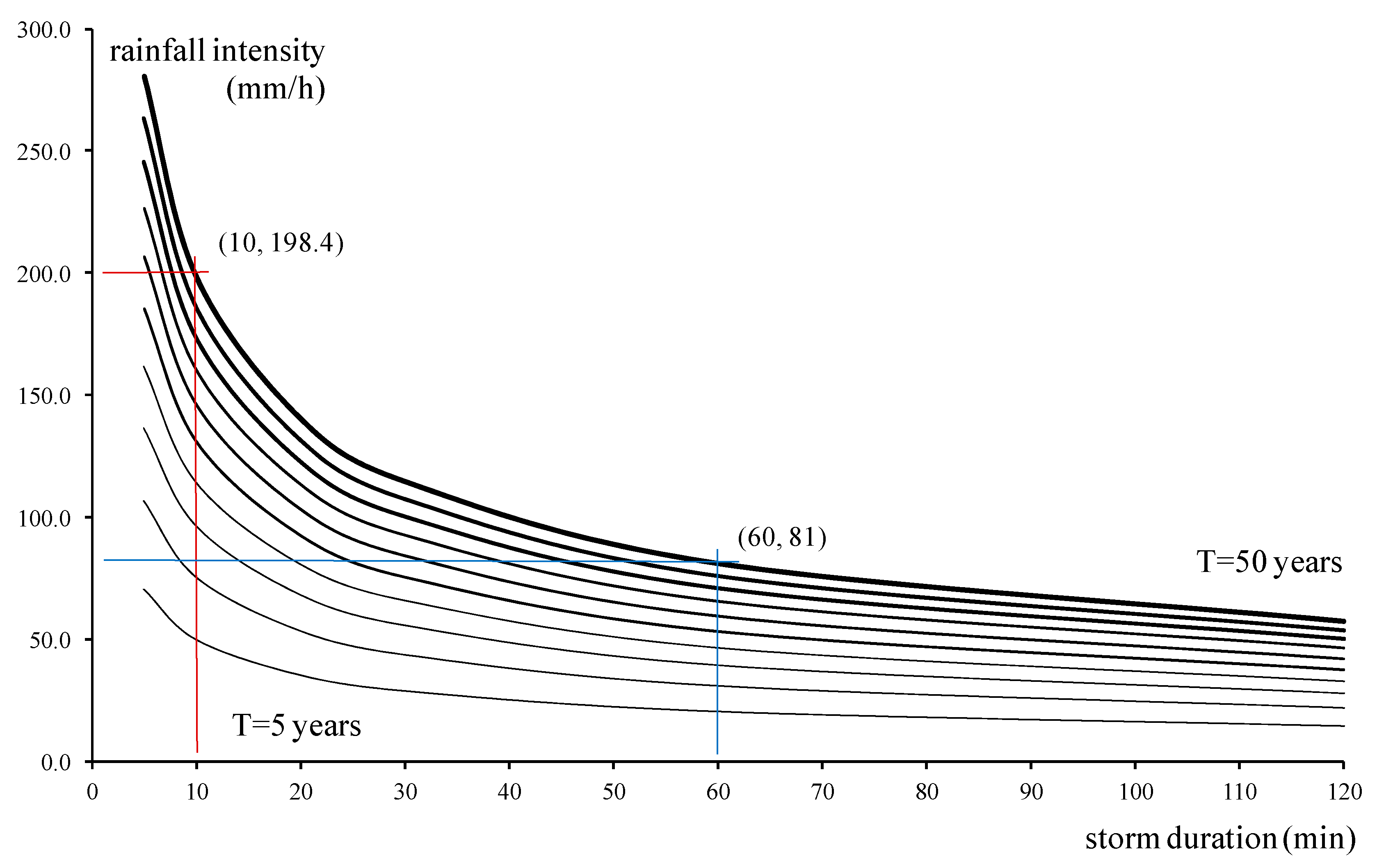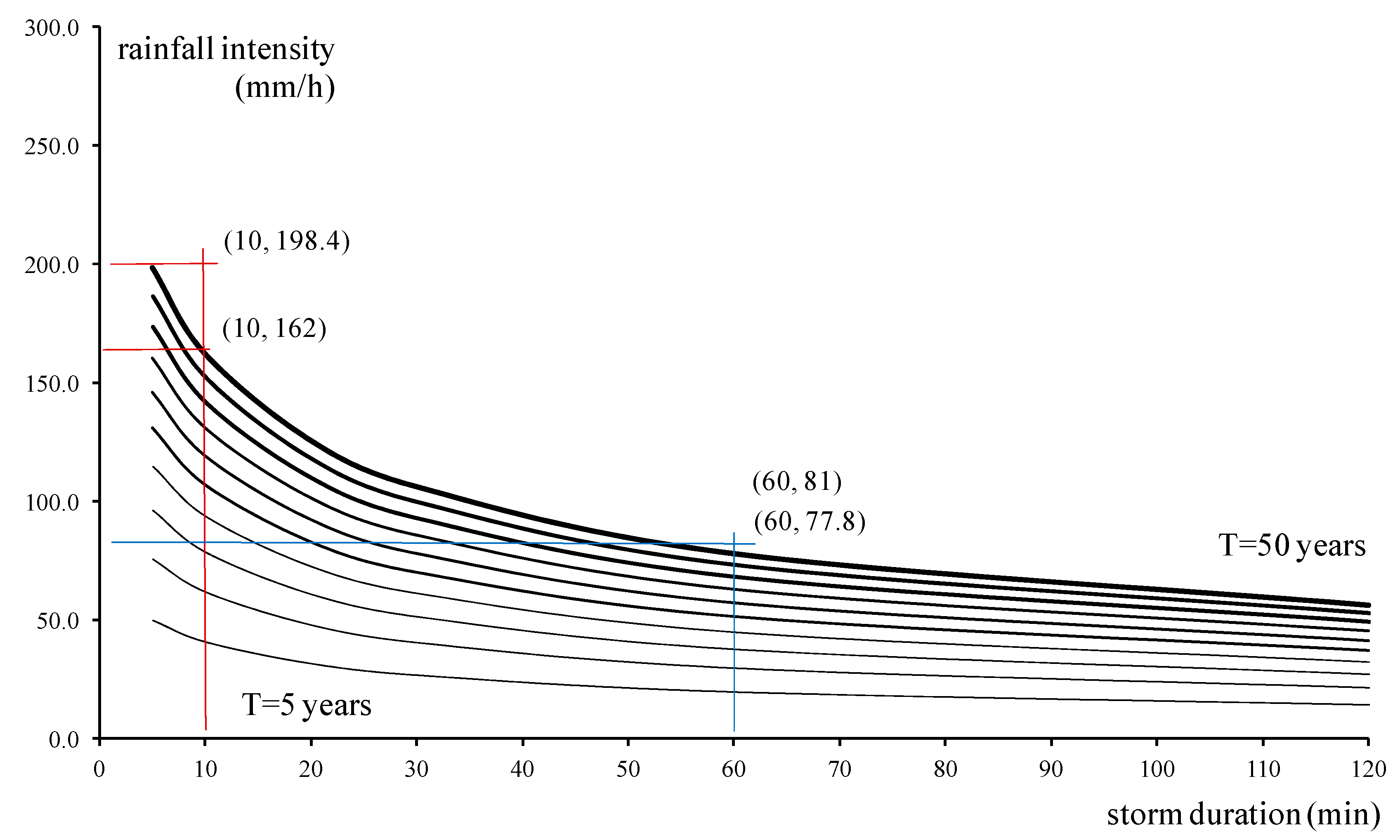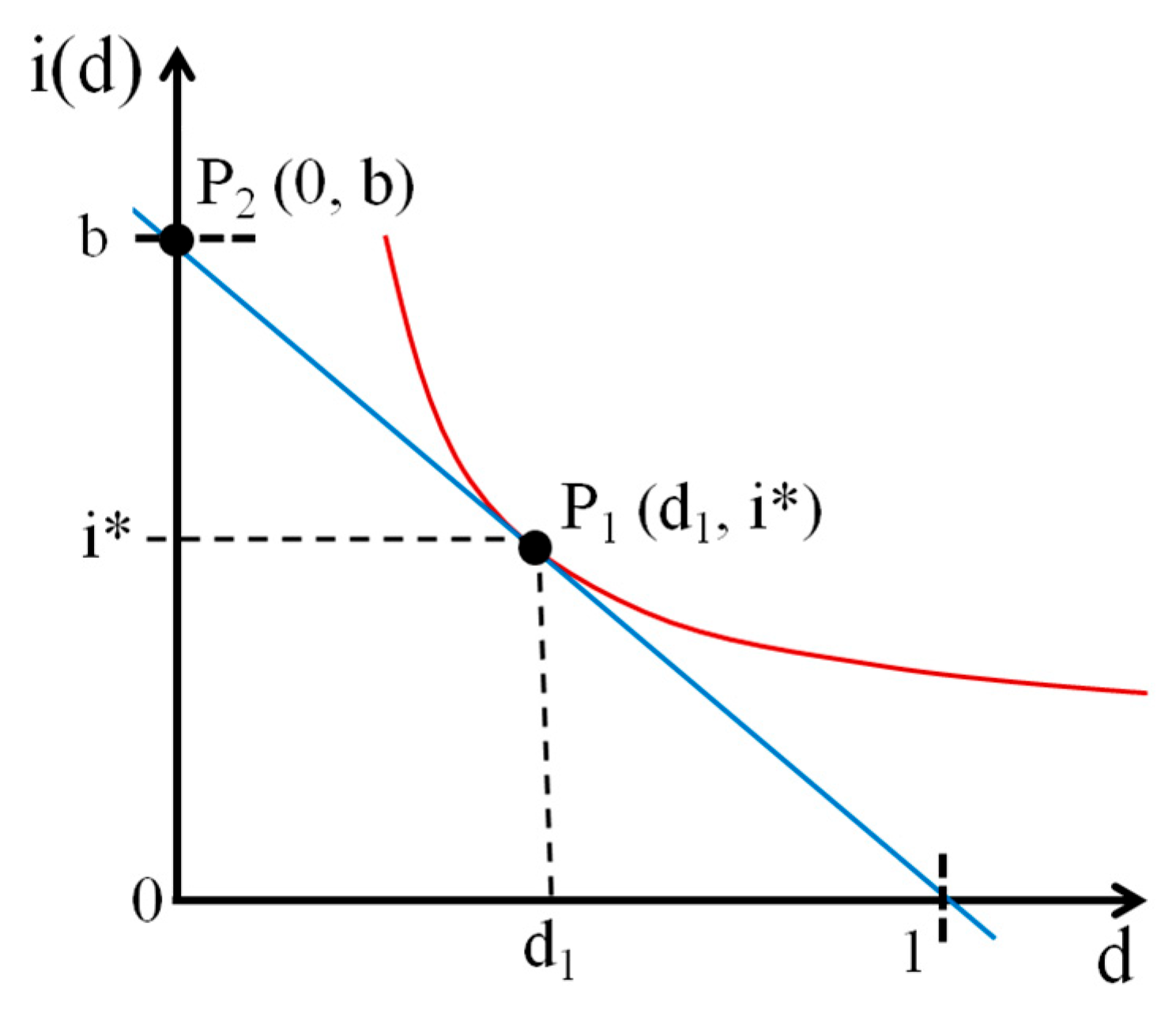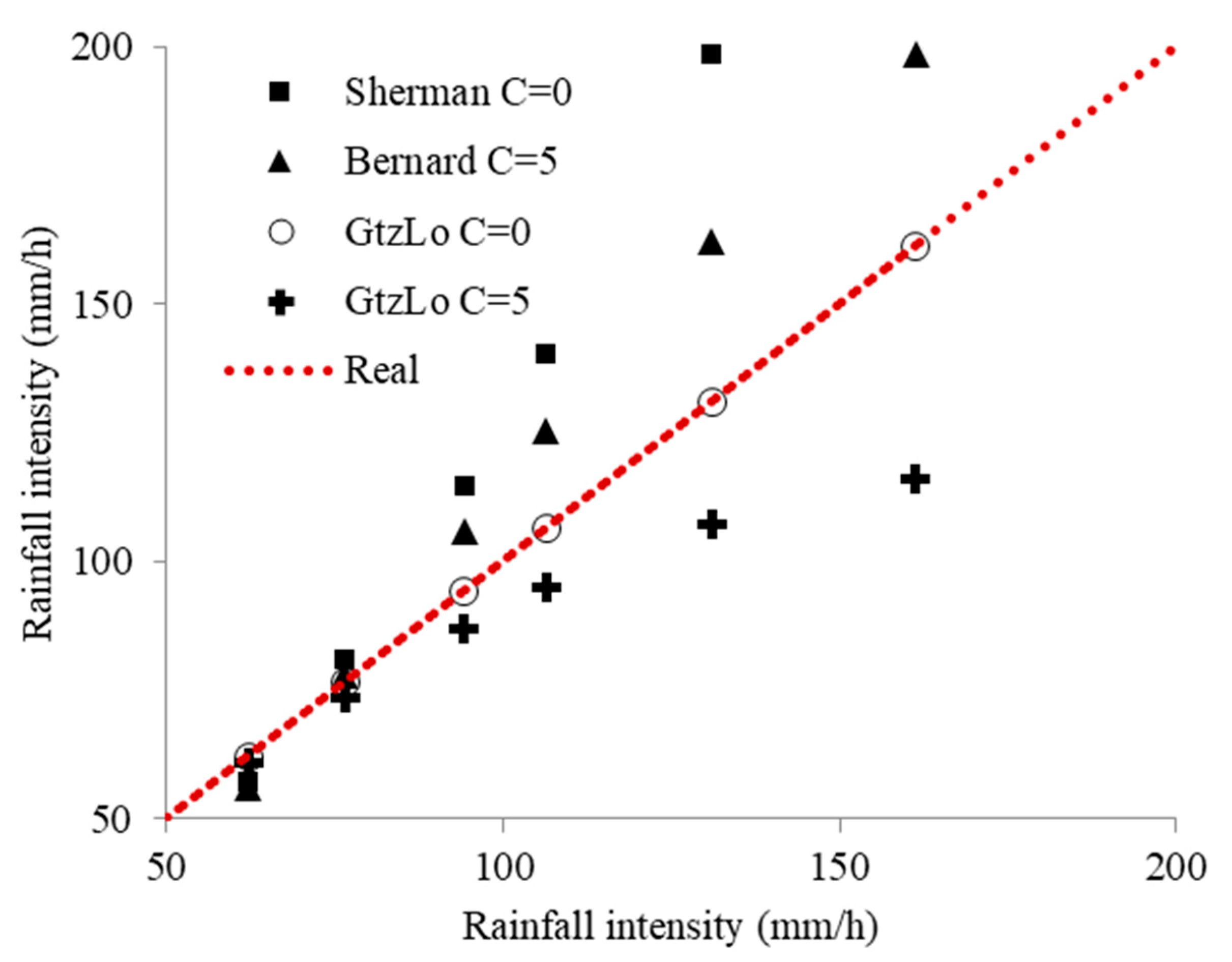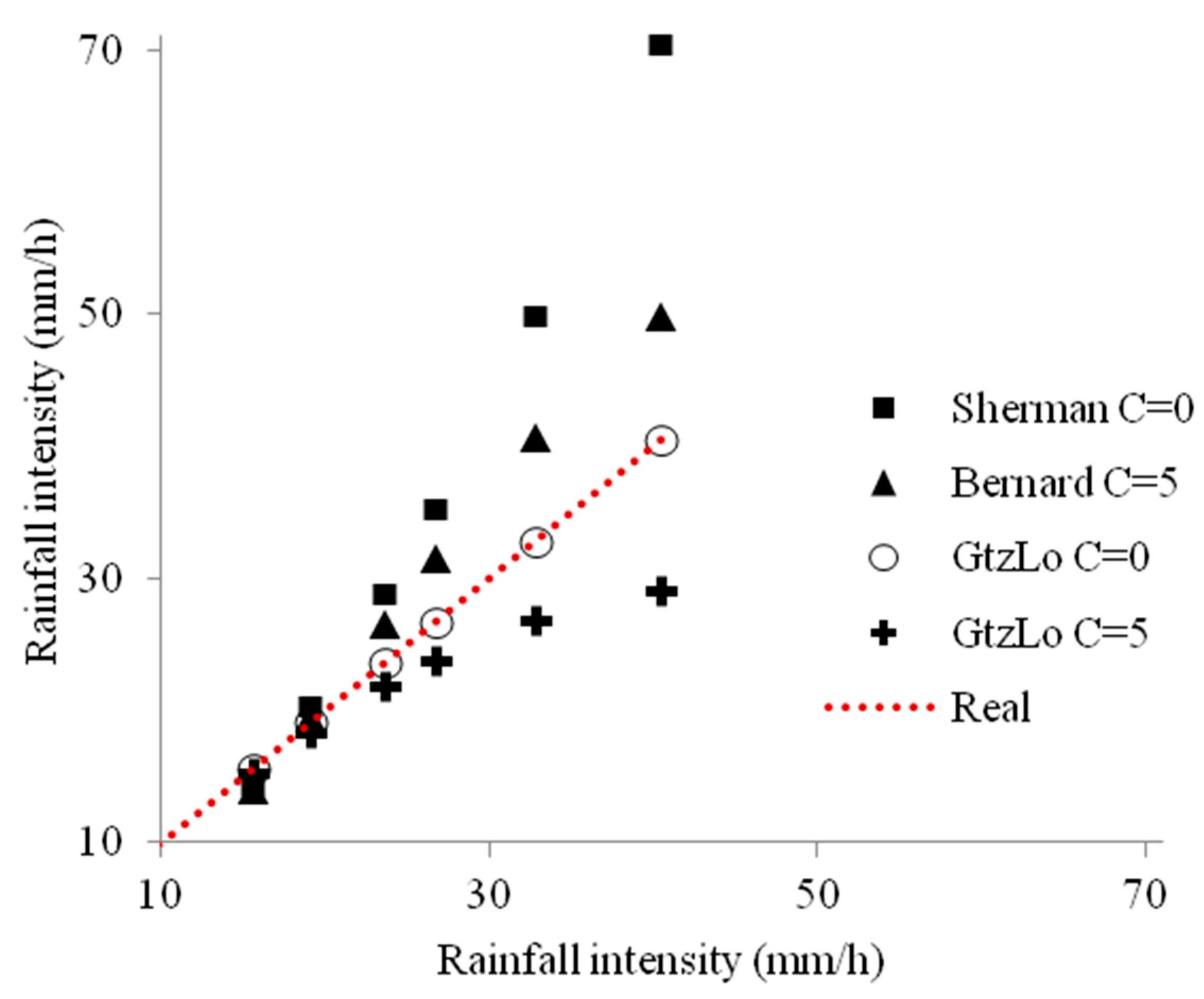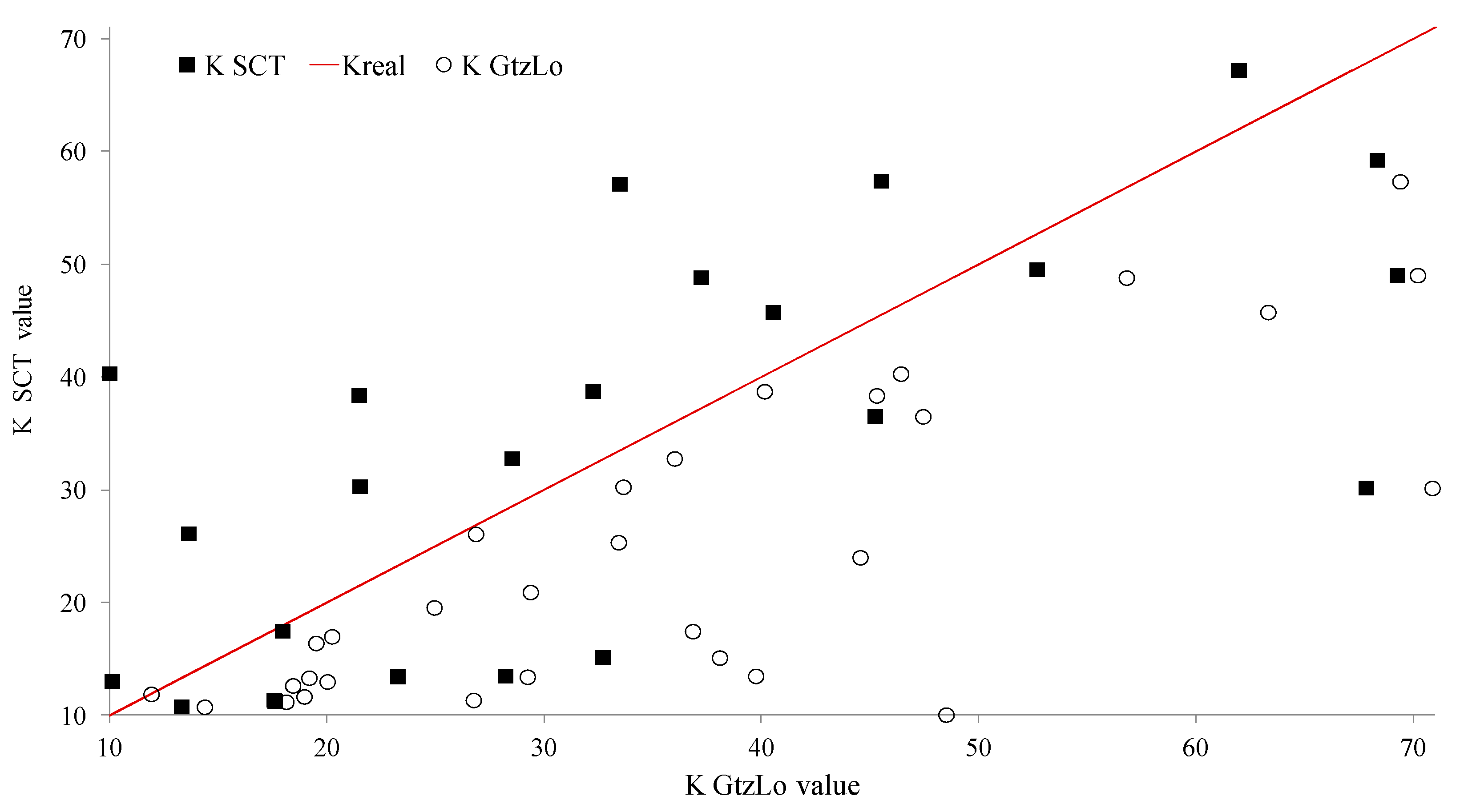Discussion of the New Formulation IDF-GtzLo in Mexico
Traditionally in Mexico, the IDF curves are derived from studies conducted by the Ministry of Communications and Transport (SCT). It is noteworthy that the National Water Commission, rather than the SCT, should be responsible for calculating and publishing these curves. However, for years, the IDF-SCT curves have been the reference in the design of civil hydraulic works.
In Mexico, the Comision de Caminos y Puentes Federales (SCT) publishes standardized IDF curves that are widely used for hydraulic design. Their procedure typically (1) adopts Sherman’s original functional form with the duration-shift parameter fixed at C = 0, (2) pools multi-year rainfall records across broad regions, and (3) fits only two coefficients (intensity scale k and decay exponent n via linear regression on log–log transformed data). By holding C at zero, SCT curves inherently allow intensities to diverge for short durations and cannot adapt to local storm microstructure. In contrast, IDF-GtzLo reintroduces C as a third calibration parameter derived directly from site-specific, short-duration observations and uses the nonlinear optimization of all three parameters (k,m,n,C). As a result, IDF-GtzLo produces finite, physically plausible intensities at d ≤ 10 min and significantly reduces fitting errors compared to the SCT approach.
The purpose of this paper is not to provide a detailed development showing the differences between the IDF-SCT and IDF-GtzLo curves for all automatic weather stations in Mexico. Such a comparison would require calculating intensities for a variety of combinations across the entire territory. However, it is important to provide a simple comparison of the potential results and implications of using the findings of this research.
Therefore, the suitability of both IDF-SCT and IDF-GtzLo formulations was compared by examining the parameter k, which is directly proportional to the return period and precipitation intensity.
Figure 6 illustrates the results for the 36 primary automatic weather stations (AWSs) in Mexico. Additionally,
Appendix A provides the IDF-GtzLo curve parameters for these stations, which can be immediately applied and used. It should be noted that the widespread adoption of this new formulation would require a review of works, structures, projects, and necessary infrastructure to consistently improve the safety of people and their property in relation to hydraulic design.
The formal reinstatement of C resolves the mathematical inconsistency and aligns model outputs with physical rainfall processes. A sensitivity analysis (Equation (4)) shows C and n as dominant parameters for short-duration event predictions. Results recommend updating national IDF standards (e.g., SCT) to incorporate continuous parameter calibration.
As illustrated in
Table 5, the goodness-of-fit test values for the k values calculated by IDF-SCT and IDF-GtzLo are presented. The SCT method demonstrated a lower mean absolute error (MAE) and root mean square error (RMSE) in comparison to IDF-GtzLo, indicating a more precise alignment with the observed k values. However, it should be noted that these results may vary depending on the selection of stations and the quality of the data. With regard to the issue of correlation, the IDF-GtzLo method demonstrated a correlation of 0.85 with the observed data in comparison to the 0.65 correlation achieved by the SCT method. Should the explained variance be utilized as an indicator, the coefficient of determination R2 of GtzLo (0.73) would indicate that it explains 73% of the variability of k in comparison to only 42% for SCT. This analysis reveals that, although the mean absolute error of SCT may be lower in some cases, the IDF-GtzLo models the overall trend of the data significantly more accurately, better capturing the structure of variation in k between stations.
A closer analysis reveals that the variance of the absolute errors of GtzLo is considerably lower than that of SCT, suggesting that while SCT may exhibit a lower mean absolute error (MAE) in certain instances, the errors of GtzLo are more concentrated around zero. This finding suggests a heightened degree of stability and reliability in the predictions made by the proposed methodology. The greater correlation with the observed data and the lower variance of the errors make IDF-GtzLo the most robust option for estimating the k parameter. The findings of this study serve to reinforce the notion that the calibration of the C parameter through empirical means, in conjunction with the utilization of nonlinear optimization techniques, represents a superior approach when compared with traditional SCT methodologies.
The parameter k functions as a scaling factor for intensity in Sherman’s formula (Equation (4)). It is evident that an elevated k results in a shift in the curve towards higher intensities across the entire range of durations. This has resulted in a shift towards more conservative designs, as the sizing of structures will need to account for increased levels of precipitation that exceed the historical record. A lower k results in lower estimated intensities, which can lead to an underestimation of extreme events and, consequently, to potentially undersized infrastructure.
The propagation error of the new formulation should be reviewed once it is applied to a whole region and to an exhaustive sample of data with extremes. However, it is not the subject of this paper, but it is suggested that the propagation error should be estimated by the Delta Method, for example. As demonstrated in
Appendix B, the application of the Delta Method is illustrated in the design of a hydraulic structure.
While the findings are based on 36 automatic stations in Mexico, with mean records over 40 years, the database is extensive and climatically diverse (convection, orographic effects, and tropical cyclones). The evaluations are contrasted with the actual design values used in national practice. The central contribution of this study is a crucial rectification of a long-standing mathematical inconsistency in the IDF formulation. This rectification is achieved while preserving continuity with engineering practice. It is acknowledged that the universality of the model still needs to be verified outside of Mexico. Future research will expand validation in contrasting climate zones worldwide, evaluating the transferability of (k, m, n, and C) and the need for regional recalibration.
